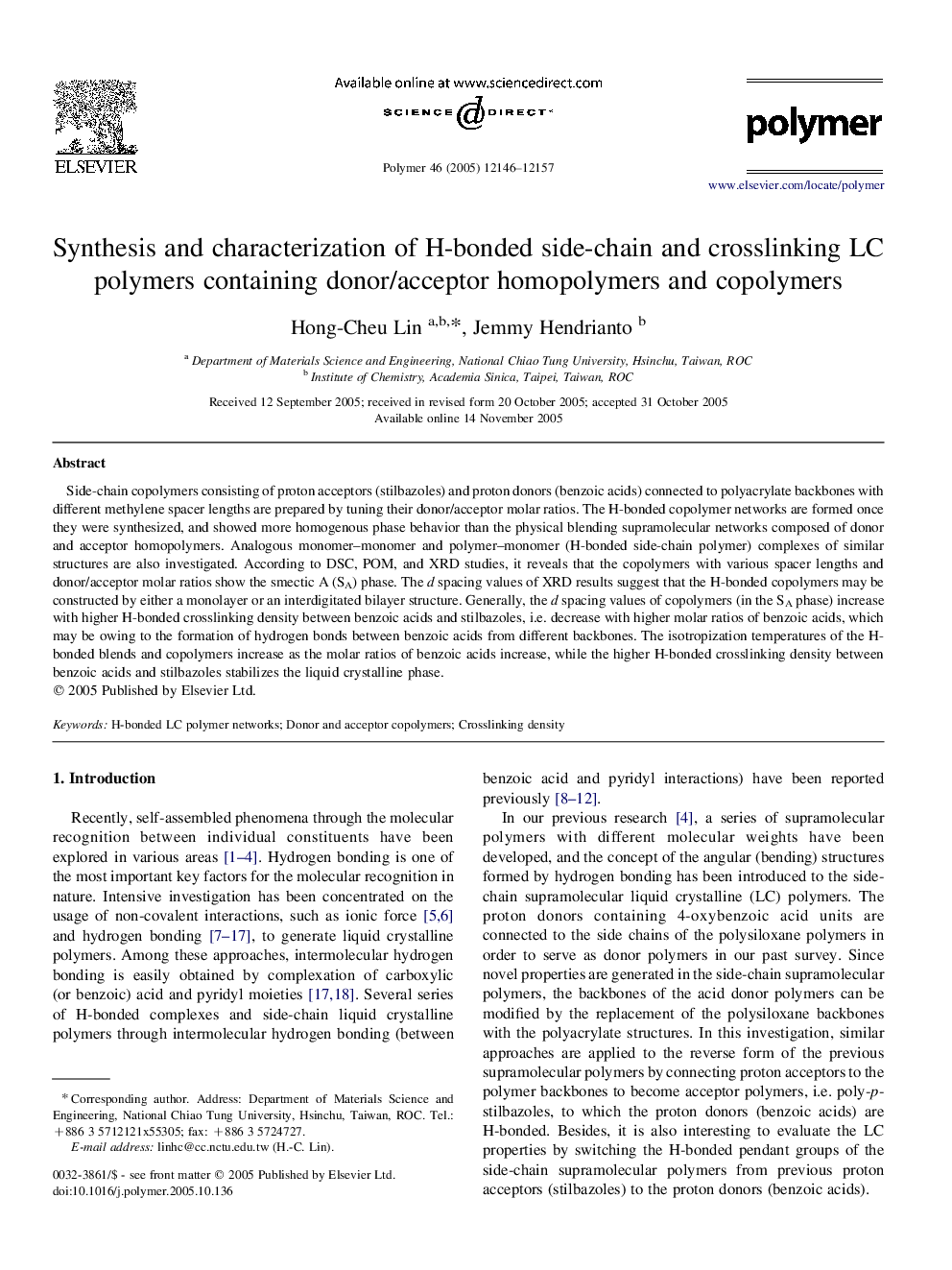| Article ID | Journal | Published Year | Pages | File Type |
|---|---|---|---|---|
| 5189612 | Polymer | 2005 | 12 Pages |
Side-chain copolymers consisting of proton acceptors (stilbazoles) and proton donors (benzoic acids) connected to polyacrylate backbones with different methylene spacer lengths are prepared by tuning their donor/acceptor molar ratios. The H-bonded copolymer networks are formed once they were synthesized, and showed more homogenous phase behavior than the physical blending supramolecular networks composed of donor and acceptor homopolymers. Analogous monomer-monomer and polymer-monomer (H-bonded side-chain polymer) complexes of similar structures are also investigated. According to DSC, POM, and XRD studies, it reveals that the copolymers with various spacer lengths and donor/acceptor molar ratios show the smectic A (SA) phase. The d spacing values of XRD results suggest that the H-bonded copolymers may be constructed by either a monolayer or an interdigitated bilayer structure. Generally, the d spacing values of copolymers (in the SA phase) increase with higher H-bonded crosslinking density between benzoic acids and stilbazoles, i.e. decrease with higher molar ratios of benzoic acids, which may be owing to the formation of hydrogen bonds between benzoic acids from different backbones. The isotropization temperatures of the H-bonded blends and copolymers increase as the molar ratios of benzoic acids increase, while the higher H-bonded crosslinking density between benzoic acids and stilbazoles stabilizes the liquid crystalline phase.
